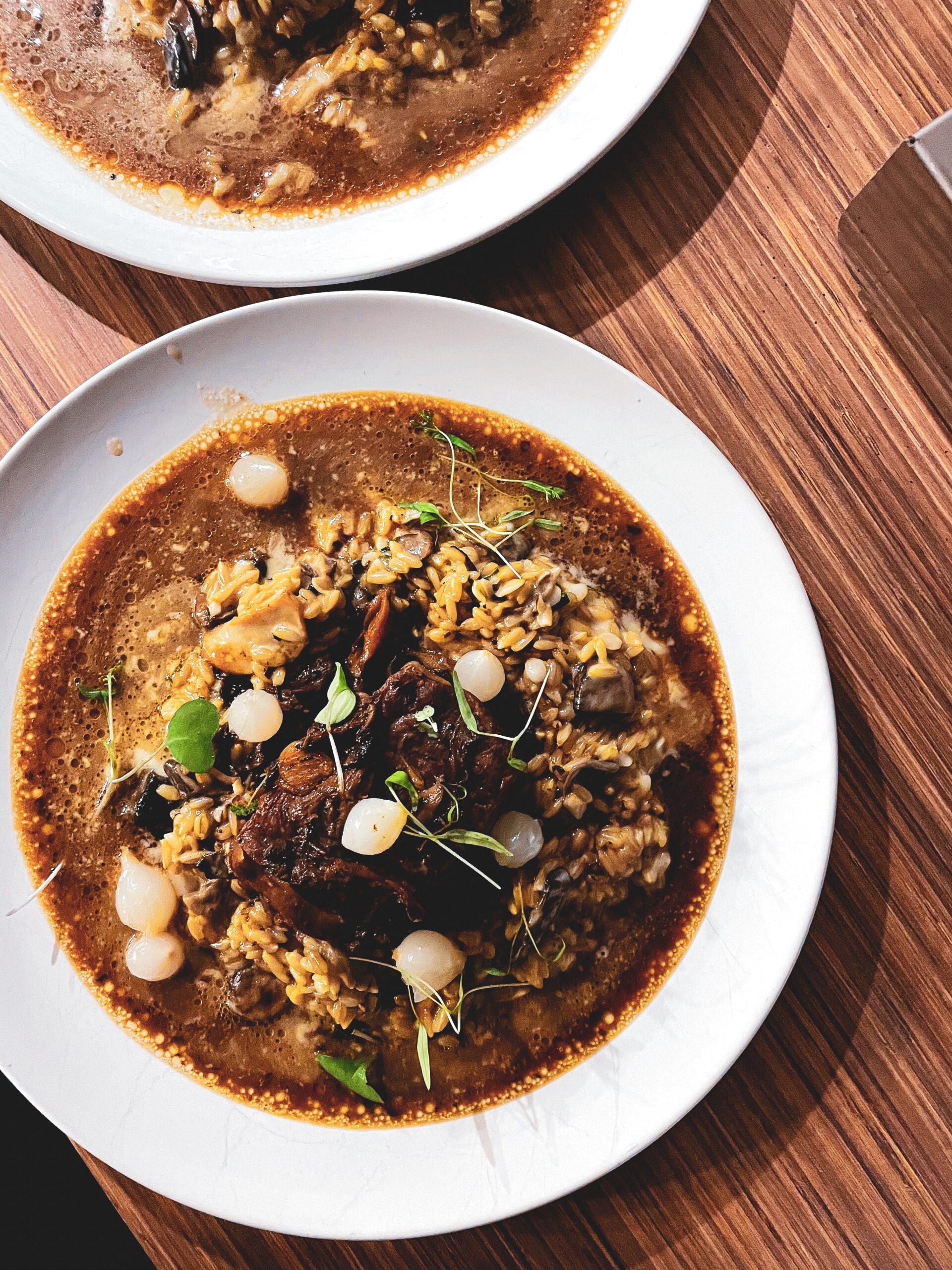When it comes to soul food, the possibilities are endless. From crispy fried chicken to slow-cooked collard greens, this beloved cuisine has become a cherished part of American culture. But what truly qualifies as soul food? It’s not just about the ingredients or the preparation method; it’s about the history, the love, and the sense of community that it represents. In this article, we will explore the rich heritage and flavors that make soul food so unique and discover why it continues to warm hearts and fill stomachs across the nation. So sit back, grab a plate, and get ready to satisfy your soul.
Origins of Soul Food
History of soul food
Soul food is a style of cooking that originated in the Southern United States, particularly among African Americans. It is deeply rooted in the history of African Americans and their struggles during slavery and segregation. The term “soul food” itself can be traced back to the 1960s, when it was popularized during the Civil Rights Movement.
Cultural origins
The cultural origins of soul food can be traced back to West Africa. Many of the ingredients and cooking techniques used in soul food have their roots in African cuisine. For example, the use of greens such as collard greens and mustard greens can be traced back to African cooking traditions. Similarly, the traditions of frying foods and slow-cooking stews can be linked to African culinary practices that were brought to the United States during the era of slavery.
How slavery influenced soul food
Slavery had a profound influence on the development of soul food. Enslaved African Americans had to make do with whatever ingredients they were given, often relying on scraps and inexpensive cuts of meat. They had to be resourceful with their cooking, using techniques such as frying and stewing to maximize flavor and tenderness. This ingenuity and creativity in the face of adversity gave birth to the rich and flavorful dishes that we now associate with soul food.
Essential Ingredients in Soul Food
Use of pork in soul food
Pork is a key ingredient in soul food and is used in various dishes. It was readily available to African Americans during slavery because plantation owners often provided their slaves with leftover or inexpensive cuts of pork. Pork ribs, ham hocks, and bacon are commonly used in soul food dishes to add flavor and richness. Collard greens cooked with smoked pork are a classic example of this combination.
Greens in soul food
Greens such as collard greens, mustard greens, and turnip greens are an essential part of soul food. They are often cooked low and slow with onions, garlic, and various seasonings to create a flavorful and savory side dish. The greens are typically simmered for a long time, which allows them to absorb the flavors of the seasonings and any additional ingredients, such as smoked meat.
Grains and legumes contribution
Grains and legumes also play a significant role in soul food. Cornmeal, for instance, is used to make cornbread, a staple in soul food cuisine. It can be enjoyed as a side dish, or used to make cornbread stuffing. Rice is another common ingredient in soul food, often served alongside dishes such as gumbo or jambalaya. Legumes such as black-eyed peas and red beans are also commonly used to create hearty and flavorful dishes.

Traditional Soul Food Dishes
Fried chicken in soul food
Fried chicken is perhaps one of the most iconic dishes in soul food cuisine. It is typically seasoned with a variety of spices and then fried to perfection. The result is crispy and flavorful chicken with tender and juicy meat. Fried chicken is often enjoyed with side dishes such as collard greens, macaroni and cheese, and cornbread.
Gumbo and stew
Gumbo is a flavorful stew that originated in Louisiana. It is a combination of various ingredients such as meat, seafood, and vegetables, cooked together with a roux made from flour and fat. Gumbo is often served over rice and can be prepared with different variations, such as seafood gumbo or chicken and sausage gumbo. Similarly, soul food includes other stews, such as oxtail stew or beef stew, which are slow-cooked to bring out the flavors of the ingredients.
Biscuits and Cornbread
Biscuits and cornbread are popular bread choices in soul food cuisine. Biscuits are light and fluffy, often served with gravy or as a side dish with fried chicken. Cornbread, on the other hand, has a hearty and slightly sweet flavor. It is a versatile bread that can be enjoyed on its own, used to make stuffing, or served alongside dishes such as chili or black-eyed peas.
Distinctive Features of Soul Food
Cooking techniques
Soul food is known for its distinct cooking techniques, many of which have been passed down through generations. Frying is a common method used in soul food, whether it’s frying chicken, fish, or other ingredients. Slow-cooking is also prevalent, as it allows flavors to develop and ingredients to become tender. Techniques such as braising and stewing are used to create rich and flavorful dishes, while baking is employed to make breads, pies, and casseroles.
Influence of the southern US
The roots of soul food can be traced back to the Southern United States, where African Americans developed their unique culinary traditions. The warm climate and rich agricultural resources of the region influenced the ingredients used in soul food. Staples such as corn, greens, and various types of meat were readily available, and this abundance helped shape the dishes that are now associated with soul food.
Food presentation style
Soul food is often served family-style, with large platters or bowls of food placed in the center of the table for everyone to share. This communal style of dining fosters a sense of unity, togetherness, and celebration. Soul food is meant to be enjoyed with loved ones, and the act of sharing a meal is an integral part of the cultural experience.
Influence of Soul Food in American Cuisine
Popularity across the country
Soul food has gained popularity across the United States, transcending the African American community. Its rich flavors and comforting nature have made it a beloved cuisine among people from all walks of life. Soul food restaurants can now be found in cities and towns across the country, introducing a wider audience to the delights of collard greens, fried chicken, and other soul food classics.
Commercialization of soul food
With the growing popularity of soul food, there has been a commercialization of the cuisine. Big-name brands and food companies have capitalized on the demand for soul food flavors by offering pre-packaged versions of traditional dishes. While this has made soul food more accessible, it has also raised concerns about the authenticity and quality of the food.
Soul food restaurants
Soul food restaurants have become a flourishing industry, catering to those seeking an authentic and delicious soul food experience. These restaurants often serve an array of traditional dishes, ranging from classics like fried chicken and collard greens to lesser-known regional specialties. They provide a space for people to come together and enjoy the flavors and cultural significance of soul food.
Soul Food and its Cultural Significance
Role in African American community
Soul food holds a special place in the hearts and homes of the African American community. It serves as a culinary connection to their heritage, reminding them of the strength and resilience of their ancestors. Soul food recipes are often passed down through generations, keeping alive traditions and stories from the past. It is a way for African Americans to celebrate their culture and share their history with others.
Soul food during special occasions
Soul food is often associated with special occasions and celebrations within the African American community. Whether it’s a family gathering, holiday feast, or community event, soul food is a centerpiece of these festivities. The act of cooking and sharing soul food recipes is a way to bring people together, honor traditions, and create lasting memories.
Cultural identity and unity through soul food
Soul food plays a vital role in maintaining cultural identity and fostering unity within the African American community. It serves as a reminder of the shared experiences and struggles endured by African Americans throughout history. By preserving and celebrating the culinary traditions of their ancestors, soul food helps to strengthen bonds and create a sense of belonging among community members.
Soul Food and Health Implications
High-calorie content in soul food
One of the challenges associated with soul food is its high-calorie content. Many traditional soul food dishes are fried, heavily seasoned, and cooked with ingredients that are high in fat and sodium. This can lead to health issues such as obesity, high blood pressure, and heart disease when consumed in excess.
Potential health risks
While soul food is undeniably delicious, it is important to be mindful of its potential health risks. The heavy use of butter, lard, and fatty cuts of meat can contribute to high cholesterol levels and increase the risk of heart disease. Additionally, the high sodium content in some soul food dishes can be detrimental to those with hypertension or kidney problems.
Healthy alternatives in soul food
Fortunately, there are ways to enjoy the flavors of soul food while making healthier choices. By using lean cuts of meat, reducing the amount of added fats and salt, and incorporating more fruits and vegetables, soul food can be made more nutritious. For example, replacing pork with leaner meats or plant-based alternatives, and baking or grilling instead of frying can help reduce calorie and fat intake without sacrificing taste.
Modern Interpretations of Soul Food
Fusion with other cuisines
In recent years, there has been a rise in fusion cuisine that combines soul food flavors with elements of other culinary traditions. This modern interpretation of soul food allows for a broader range of flavors and ingredients to be incorporated into traditional dishes. For example, dishes that blend Mexican, Asian, or Mediterranean influences with soul food techniques and flavors have become popular in contemporary restaurants.
Vegan and vegetarian soul food
Another modern interpretation of soul food is the rise of vegan and vegetarian options. With an increased focus on plant-based diets, many people are seeking alternatives to meat-based soul food dishes. Chefs and home cooks have found innovative ways to create vegan versions of soul food classics, using ingredients such as tofu, tempeh, and seitan to mimic the textures and flavors of meat.
Contemporary soul food restaurants
Contemporary soul food restaurants are blending tradition with innovation to create unique dining experiences. These establishments often reinterpret classic soul food dishes using modern cooking techniques and presentation styles. They may offer smaller, tapas-style plates or create tasting menus that showcase the flavors and versatility of soul food in new and exciting ways.
Influence of Soul Food in Pop Culture
Representation in films and TV shows
Soul food has made its mark on popular culture, with numerous films and TV shows showcasing its significance. Movies like “Soul Food” (1997) and “The Help” (2011) have highlighted the role of soul food in African American families and communities. Reality cooking shows featuring soul food, such as “Top Chef” and “Chopped,” have also helped raise awareness and appreciation for this cuisine.
Songs and literature about soul food
Soul food has been celebrated in various forms of art and literature. Many songs mention soul food or reference specific dishes, underscoring its cultural significance. Additionally, books and cookbooks have been written to explore the history, recipes, and cultural impact of soul food. These artistic expressions contribute to the ongoing celebration and recognition of soul food as an integral part of American culture.
Celebrity chefs and soul food
Celebrity chefs have played a significant role in promoting and elevating soul food to a wider audience. Chefs such as Marcus Samuelsson, Carla Hall, and Tanya Holland have showcased soul food on their shows, demonstrating its versatility and highlighting its cultural importance. Their culinary expertise and love for soul food have helped shape the perception of this cuisine in the mainstream culinary world.
Future of Soul Food
Innovative soul food recipes
The future of soul food lies in continued innovation and creativity. As culinary tastes evolve and dietary preferences change, chefs and home cooks will continue to reinterpret and experiment with soul food flavors and recipes. This could include incorporating global ingredients and cooking techniques or exploring new ways to make soul food healthier and more sustainable.
Increasing popularity worldwide
Soul food’s popularity is on the rise not only in the United States but also worldwide. As people become more adventurous and curious about different cuisines, soul food is gaining recognition for its unique flavors and cultural significance. International food festivals, cultural exchanges, and social media platforms are helping to spread appreciation for soul food beyond its traditional borders.
Promoting healthy soul food
With increased awareness about the importance of healthy eating, there is a growing movement to promote healthier versions of soul food. Chefs, food bloggers, and nutritionists are developing recipes and resources that focus on low-fat, low-sodium, and plant-based alternatives to traditional soul food dishes. By highlighting the health benefits of these modifications, the goal is to make soul food accessible and enjoyable for everyone, while improving overall well-being.
In conclusion, soul food is more than just a type of cuisine – it is a cultural experience and a symbol of resilience and community. From its origins in the hardships of slavery to its integration into American pop culture, soul food continues to evolve and captivate audiences around the world. While it carries a rich legacy and heritage, soul food also has the potential to adapt and grow, offering endless possibilities for the future. Whether enjoyed in a traditional family setting or at a contemporary restaurant, the flavors and stories of soul food will forever link us to our past and inspire us in the present. So, embrace the warmth, the flavors, and the history of soul food, and savor every bite of this delicious culinary tradition.


